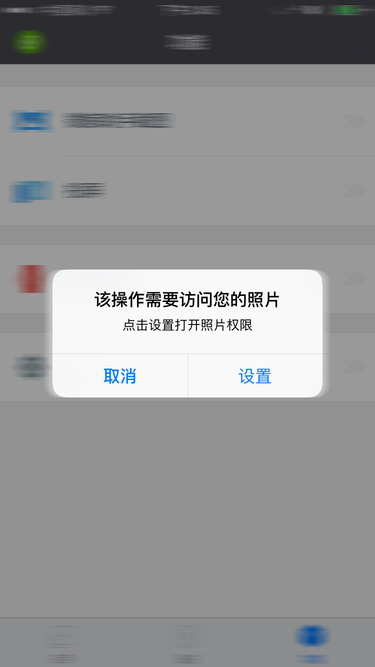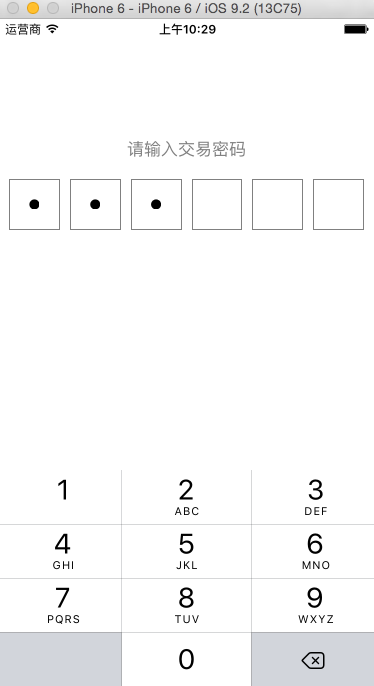YYModel使用教程
我最近在通讀 YYModel 源碼,在快速上手使用的時候,發現網上對 YYModel 的使用解釋很不完善。哪怕是 YY大神自己的使用說明,我直接復制拿來用也發現有用不了。所以有了這篇文章!這篇文章只對我認為需要補充的說明的方法進行說明。簡單用法不再贅述。(復制Json時不要把 //JSON這種同學復制進去,會解析失敗的。)
先對 YYModel的協議進行說明!
1.自定義屬性映射
+ (nullable NSDictionary*)modelCustomPropertyMapper;
//自定義類的屬性 @property NSString *name; @property NSInteger page; @property NSString *desc; @property NSString *bookID;
//JSON
{ "n":"Harry Pottery",
"p": 256,
"ext" : {
"desc" : "A book written by J.K.Rowing."
},
"id" : 100010
}使用這個方法需要在自定義類裡面重寫該方法。
2.自定義容器映射
假如你的對象裡面有容器(set,array,dic),你可以指定類型中的對象類型,因為YYModel是不知道你容器中儲存的類型的。在dic中,你指定的是它 value 的類型。
+ ( NSDictionary*)modelContainerPropertyGenericClass;
@interface YYAuthor : NSObject @property (nonatomic, strong) NSString *name; @property (nonatomic, assign) NSDate *birthday; @end@interface User : NSObject@property UInt64 uid; @property NSString *bookname; @property (nonatomic, strong) NSMutableArray *authors;@end
{ "uid":123456, "bookname":"Harry",
"authors":[{ "birthday":"1991-07-31T08:00:00+0800", "name":"G.Y.J.jeff"},
{ "birthday":"1990-07-31T08:00:00+0800", "name":"Z.Q.Y,jhon"}]
}\相當於泛型說明
+ (NSDictionary *)modelContainerPropertyGenericClass {
return @{@"authors" : [YYAuthor class]};
}3.根據字典返回類型
這個方法是可以根據字典裡的 數據 來指定當前對象的類型。我對這個方法的理解,假如 Person 是父類,其子類是 Man,Woman。這個時候你可以根據 dic["sex"]中的 value,比如value為 NSString 的 Man,在重寫的方法裡 return Man.這個時候,你當前的字典轉模型的實例就是 Man的實例對象。(此處的 dic就是網絡獲取的 Json轉成的 Dict。
注:這就是多態。
+ (nullable Class)modelCustomClassForDictionary:(NSDictionary*)dictionary;
{ "name":"Jeff", "age":"26", "sex":"Man", "wifeName":"ZQY"}//.h@interface Person : NSObject
@property (nonatomic, copy) NSString *name;
@property (nonatomic, assign) NSUInteger age;
@end@interface Man : Person
@property (nonatomic, copy) NSString *wifeName;@end@interface Woman : Person
@property (nonatomic, copy) NSString *husbandName;
@end
//.m+ (Class)modelCustomClassForDictionary:(NSDictionary*)dictionary {
if (dictionary[@"sex"] != nil) {
NSString *runClass = dictionary[@"sex"];
return NSClassFromString(runClass);
} else {
return [self class];
}
}NSData *dataPerson = [self dataWithPath:@"person"]; Person *person = [Person modelWithJSON:dataPerson]; [person modelDescription];
這個時候你會發現,當前person的類實際上是 Man,而不是 Person。
4.白名單,黑名單
+ (nullable NSArray *)modelPropertyBlacklist; 黑名單 + (nullable NSArray *)modelPropertyWhitelist; 白名單
這兩個比較簡單。
黑名單,故名思議,黑名單中的屬性不會參與字典轉模型。
白名單使用比較極端,你用了之後,只有白名單中的屬性會參與字典轉模型,其他屬性都不參與。不推薦使用。
//使用了黑名單,將來會剔除黑名單中的屬性
+ (NSArray *)modelPropertyBlacklist {
return @[@"blackListTest"];
}
//白名單使用比較極端,只有白名單中的可以通過。 正常情況使用黑名單即可。
+ (NSArray *)modelPropertyWhitelist {
return @[@"name"];
}5.更改字典信息
該方法發生在字典轉模型之前。 最後對網絡字典做一次處理。
- (NSDictionary *)modelCustomWillTransformFromDictionary:(NSDictionary *)dic;
\原來json{ "name":"Jeff", "age":"26", "sex":"Man", "wifeName":"ZQY"}
\更改後{}- (NSDictionary *)modelCustomWillTransformFromDictionary:(NSDictionary *)dic{
if ([dic[@"sex"] isEqualToString:@"Man"]) {
return nil;//這裡簡單演示下,直接返回 nil。相當於不接受男性信息。
}
return dic;//女性則不影響字典轉模型。
}6.字典轉模型補充
- (BOOL)modelCustomTransformFromDictionary:(NSDictionary *)dic;
@interface User : NSObject @property UInt64 uid; @property NSDate *created; @property NSDate *createdAt; @property NSString *bookname;@end
{"uid":123456, "bookname":"Harry", "created":"1965-07-31T00:00:00+0000", "timestamp" : 1445534567}字典轉模型結束後createdAt屬性應該是空的,因為timestamp 和 createdAt 不一樣。但你在這裡賦值,手動把timestamp的屬性賦值給_createdAt.這個有點類似第一點的 自定義屬性映射(本篇文章第一條)。
注:此處如果 return NO,dic->model將失敗。
- (BOOL)modelCustomTransformFromDictionary:(NSDictionary *)dic {
NSNumber *timestamp = dic[@"timestamp"];
if (![timestamp isKindOfClass:[NSNumber class]]) return NO;
_createdAt = [NSDate dateWithTimeIntervalSince1970:timestamp.floatValue];
return YES;
}7.模型轉字典補充
- (BOOL)modelCustomTransformToDictionary:(NSMutableDictionary *)dic;
這個方法和第6條是相對應的關系。這裡是model->json 的補充。
假如自己model 中有_createdAt,那 model 轉到 json 中的timestamp會被賦值。
- (BOOL)modelCustomTransformToDictionary:(NSMutableDictionary *)dic {
if (!_createdAt) return NO;
dic[@"timestamp"] = @(_createdAt.timeIntervalSince1970);
return YES;
}注:此處如果 return NO,model->dict將失敗。
8.字典用法和數組的用法
+ (nullable NSArray *)modelArrayWithClass:(Class)cls json:(id)json; + (nullable NSDictionary *)modelDictionaryWithClass:(Class)cls json:(id)json;
[{"birthday":"1991-07-31T08:00:00+0800", "name":"G.Y.J.jeff"},
{"birthday":"1990-07-31T08:00:00+0800", "name":"Z.Q.Y,jhon"}]@class YYAuthor;@interface YYAuthor : NSObject @property (nonatomic, strong) NSString *name; @property (nonatomic, assign) NSDate *birthday; @end
NSData *dataArr = [self dataWithPath:@"arrayTest"]; NSArray *arrT = [NSArray modelArrayWithClass:[YYAuthor class] json:dataArr]; NSLog(@"arrT = %@",arrT);
+ (NSDictionary *)modelDictionaryWithClass:(Class)cls json:(id)json;
這個方法的意思是只會在對字典的 value 用cls去解析。無法解析key:{key:value(cls)},這種嵌套的解析無法進行。只會解析第一層的。
{
"user1": {
"birthday":"1990-07-31T08:00:00+0800",
"name":"1Z.Q.Y,jhon"},
"user2":{
"birthday":"1990-07-31T08:00:00+0800",
"name":"2Z.Q.Y,jhon"},
"user3":{"user4":{
"birthday":"1990-07-31T08:00:00+0800",
"name":"3Z.Q.Y,jhon"}
}
}NSData *dataDict = [self dataWithPath:@"dicTest"]; NSDictionary *dicT = [NSDictionary modelDictionaryWithClass:[YYAuthor class] json:dataDict]; NSLog(@"dicT = %@",dicT);
如果對使用方法還略有不懂,可以下載我的 github 上的工程。裡面都是經過測試的。
下面的源碼是我在讀 YYModel 時添加的大量備注,和 YYModel 的簡單使用介紹。
源碼地址 :https://github.com/PomTTcat/YYModelGuideRead_JEFF
這篇文章沒講 model->json,因為那個太簡單了。平時使用重點是json->model。
最後的最後,哪裡不明白可以一起交流技術!
- IOS 陀螺儀開辟(CoreMotion框架)實例詳解
- iOS中關於信鴿推送的應用demo詳解
- iOS Remote Notification長途新聞推送處置
- 處理Alamofire庫在iOS7下設置Head有效的成績
- 在Swift中應用JSONModel 實例代碼
- iOS中斷定Emoji臉色成績
- iOS的UI開辟中Modal的應用與主流運用UI構造引見
- iOS網絡重定向,mock數據
- 挪動平安測試框架MobSF(一):靜態剖析
- iOS之處理解體Collection <__NSArrayM: 0xb550c30> was mutated while being enumerated.
- iOS之解體處置:This application is modifying the autolayout engine from a background thread
- iOS整合Unity項目參加SceneKit報錯Undefined symbols for architecture arm64: _OBJC_CLASS_$_SCNLight
- iphone解體日志剖析工具symbolicatecrash用法
- [iOS]modalPresentationStyle和modalTransitionStyle
- 誰說Android沒有好的對話框?可以自定義炫酷款式的LemonHello來啦~




